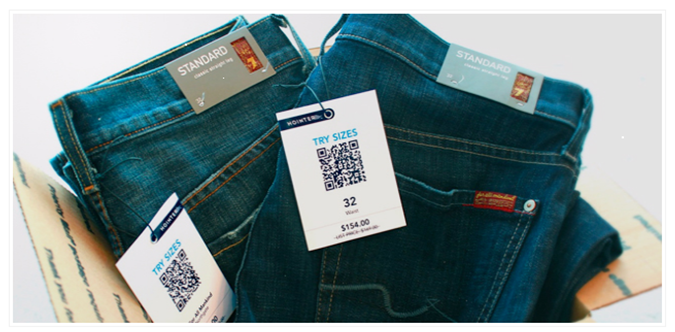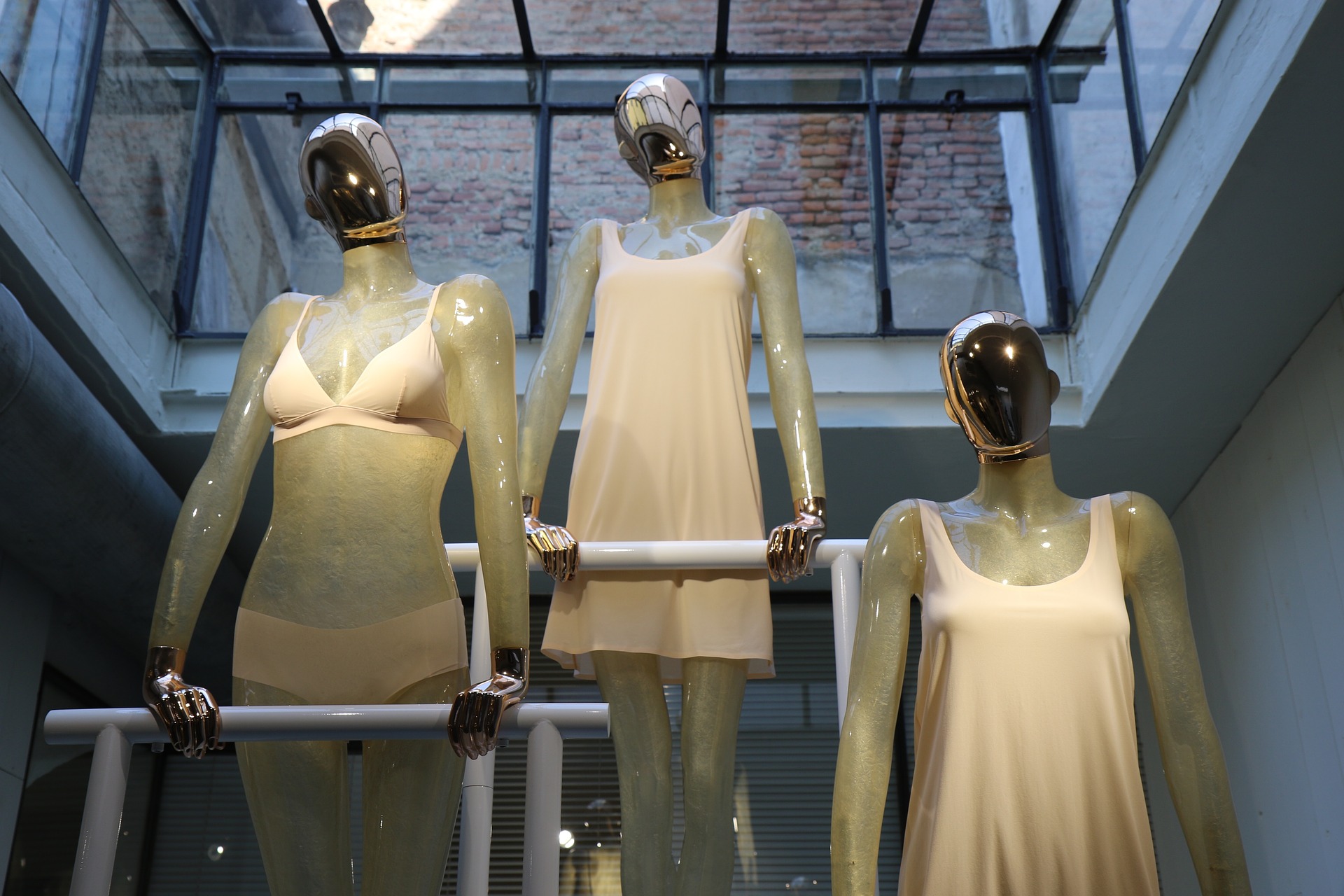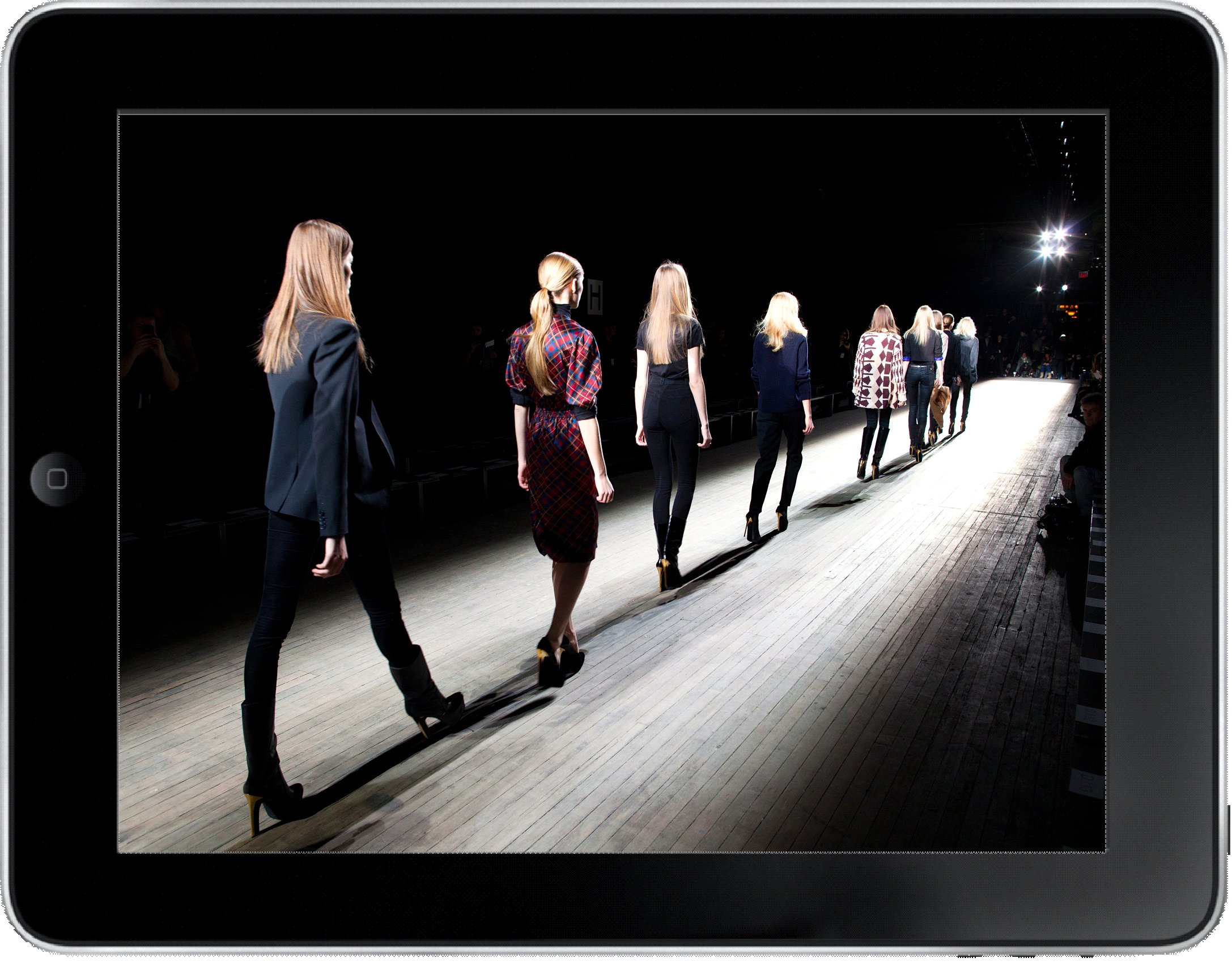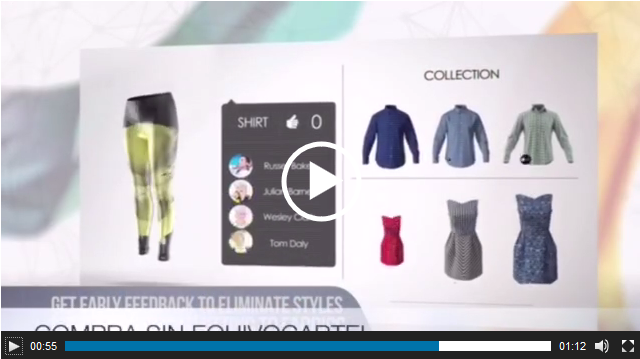
Do you know what a QR code is?
After multiple interviews with a diverse number of individuals, one can be truly astonished at the results yielded from them. Some coincide, while others contradict each other. However, in all attempts for knowledge, there has been one question which always received the same answer.
If I were in your shoes at this moment, I would probably be wondering.. What could it be? In this specific case of intriguing knowledge I will not leave you wondering, since that wouldn’t be fair. The question was the following:
“Do you know what a QR code is?”
Surprisingly, 98% of the people surveyed answered NO to this question.
Yet when they were told that it was the famous square composed barcode that is scanned on travels by train or plane, then they strongly insist that knew of it. Not only that, but also that they have used it on several occasions before. One of lifes curiosities… the number of things we use but do not know the name for.
Regardless, what is important is not that individuals know the name, but that they use it.
Now that we know the these «geometrical figures» are a normal sight in the scope of transport we wonder, is it the same in the world of fashion? In my opinion, the QR code still has a far way to go.
When one observes the labels in clothing, they forget that in each of them there is this before mentioned code, albeit not always. Not all brands include it, and some of them offer little to no additional information even if they are.
Brands like Zara and Promod are few of the ones that do. The first redirects you to their website, while the second accomplishes the improved action of displaying a model with the clothing on. Similarly, scanning the QR code in Promod allows the buyer to access additional information regarding specific sizes of the clothing as well as complementing products that could be combined with it (in the case of pants: shoes, handbags, sweaters, scarves, ect.). This is the right approach that all other brands should follow.
But, even after this, the QR code is not sufficiently attractive. People would not lose their time scanning it. They believe there is no added value.
Thus, I ask you: What information would the QR code have to offer for it not to be a waste of time to scan with your phones? Should there be more advertisements about this asset in stores? Is it worth spending money in this technology?
I hope you all think about this, as I leave a sample of Ralph Lauren. Will you waste your time scanning it?


¿Sabes lo que es el código QR?
Después de realizar múltiples entrevistas a un gran número de personas, uno realmente se sorprende con cada una de las respuestas que obtiene. Algunas son coincidentes, otras, muy dispares. Sin embargo, en todos mis intentos por recabar información, ante una de mis preguntas, siempre obtuve la misma respuesta.
Si yo fuera ustedes, una vocecita interior llamaría mi atención. Esta me diría algo así como…¿De qué se trata exactamente?
Frente a esta situación de completa intriga por el saber, yo no voy a ser quién para dejarles con la intriga. Aunque podría, no sería justo. Mi pregunta era la siguiente:
“¿Conoces lo qué es el código QR?”
Sorprendentemente, el 98% de los encuestados respondía que NO sabía lo que era.
Ahora, si al entrevistado se le explicaba que se trataba del famoso “cuadradito” que se escanea a la hora de viajar en tren y en avión, entonces afirmaban rotundamente que si lo conocían. No sólo eso, sino que para más inri lo habían utilizado en varias ocasiones. Curiosidades de la vida…cuantas cosas utilizamos que en realidad no sabemos que nombre tienen.
No obstante, lo importante no es que la gente lo conozca por su nombre, sino más bien, que la gente lo utilice.
En el ámbito de los transportes ya es normal ver estas “figuras geométricas” pero, ¿y en el mundo de la moda? En mi opinión, el QR todavía tiene mucho camino por recorrer.
Cuando uno observa las etiquetas de las prendas de ropa, uno se percata de que en ellas, a veces, podemos encontrar el susodicho código, pero no siempre. No todas las marcas lo imprimen. Y algunas, a pesar de imprimirlo, no ofrecen ninguna información adicional.
Marcas como Zara y Promod sí lo hacen. La primera, te redirecciona a su propia página web, mientras que la segunda, mejorada, te redirecciona a una imagen de una modelo con la prenda puesta. Asimismo, escaneando el QR de Promod, el cliente obtiene información adicional de ciertas medidas de la misma en centímetros y de complementos que pueden combinar con ésta (en el caso de que sea un pantalón: zapatos, bolsos, blusas, fulares, etc.). Ésta es la línea a seguir por todas las marcas.
Pero, a pesar de ello, el código QR sigue sin ser lo suficientemente atractivo. Las personas no perderían su tiempo en escanearlo. Consideran que no existe ningún valor añadido.
Por lo tanto, yo les pregunto, ¿Qué información debería ofrecer el QR para que perdieran su tiempo en escanearlo con su móvil? ¿Se debería de hacer más publicidad de éste instrumento en las tiendas? ¿Es necesario invertir dinero en esta tecnología?
Espero reflexionen sobre ello y les dejo aquí una pequeña muestra de Ralph Lauren. ¿Perderán su tiempo en escanearlo?.


The new tendencies of fashion and technology
Greetings friends, how is everyone? Dress60 will now immerse itself in technology in order to advance with the new trends that are captivating everyone’s attention. The diverse communication methods are showing the revolutionary fashion sector tendencies, causing the tables to shake. As the months go by, technology keeps growing, shocking us with new possibilities, perfecting previous existing methods. Furthermore, this technology is now starting to enter the fashion world, enveloping it with virtual reality, 3D glasses and multifunctional robots.
Moving on to the “new digital era”, we find different digital tendencies and innovation, focusing on fashion. The times with predetermined manikin sizes are over, the new manikins now adapt to each individuals sizes. This new project, known as iDummy, is the result of long years of hard work. This promising and brilliant challenge has transformed into a viral idea in social networks, attracting trendy girls and engineers. Trendencias takes the official role of the loudmouth that lets us know about the robot-manikin.

Just as the thousands of users let us know, the standard manikin is a bit obsolete. Also, the personalized clothing is reaching extremes that highly entice customers. All those fashionista that had troubles picking the right size, now is the time to shop. But what truly generated frustration was having to face a model of unreachable dimensions, which did not truly represent the consumers actual body. In order to improve this problem, the proposals of future technologies will be able to solve the needs. These are the tendencies that Dress60 wants to incorporate in the shopping experience process.
The famous customer experience has evolved from the catwalk to our houses, adding an element of value to the future of fashion through the use of virtual reality. We leap from seeing the medieval Sevilla with Past View to being present in a fashion show, all thanks to what looks like simple glasses or a phone.
We will follow the evolution of this promising marriage formed by technology in the digital age and the capitalized fashion.

Nuevas tendencias en moda y tecnología
¿Qué hay de nuevo amigos? Dress60 se viste de tecnología para avanzar sobre las nuevas tendencias que están acaparando la atención de todos. Cuando los diferentes medios de comunicación advierten de una revolucionaria tendencia en el sector de la moda las mesas comienzan a temblar. Los meses avanzan y la tecnología sigue maravillando con nuevos inventos o, simplemente, con los mismos instrumentos pero perfeccionados. Más si cabe, la tecnología quiere abordar el sector de la moda y esta vez quiere envolverla de realidad aumentada, gafas 3D y robots multifuncionales. Pasamos de hablar de «nueva era digital» a encontrar innovación y evolución digital en diferentes tendencias, en este caso en la moda.
Atrás quedaron los maniquíes de tallas predeterminadas. Descubrimos el nuevo maniquí – robot que se adapta a tus medidas. Se dice pronto pero el proyecto que lleva consigo el nombre de iDummy es el resultado de años de duro trabajo. Un reto prometedor y brillante se ha convertido en viral en las redes sociales atrayendo a fashionistas e ingenieros. Trendencias toma el rol de vocero oficial y nos pone al tanto de este nuevo robot-maniquí.

Tal y como reclaman miles de usuarios y usuarias, el maniquí estándar está un poco obsoleto mientras que las tallas no predeterminadas, junto con la personalización, van tomando forma hasta tal extremo que nos encanta. Las llamadas fashionistas anunciaron que tenían problemas con la elección de la talla adecuada, a la hora de ir a comprar. Pero lo que sí generaba frustración, en algunas ocasiones, era el enfrentarse a una modelo de alturas a veces inalcanzables, que no reflejaba el cuerpo estándar de las compradoras.
Ante estas situaciones, las nuevas propuestas tecnológicas son una apuesta de futuro en la resolución de estos dilemas. Tendencias que Dress60 quiere incorporar en la concepción de «experiencia de compra».
El famoso customer experience evoluciona de la pasarela a la casa, añadiendo otro elemento más de valor al “mundo fashion” de la mano de la realidad aumentada. Pasamos de recorrer la Sevilla medieval con Past View a estar presentes en un fashion show, gracias a la ayuda de lo que parecen unas simples gafas y un móvil.
Seguimos la evolución de este prometedor matrimonio que forman tecnología en la era digital y Moda con mayúsculas.

The digital future of Fashion
The world of fashion is changing at a tremendous pace. Newer technologies are born and introduced every day, originating in Balenciaga, Ortega or Blahnik. But… Why? There are two basic reasons: The first is attributed to the evolution of new technologies, and the second is due to the Millennials. The digital future of fashion is almost here.
It is quite likely that one of them is reading this article, but who are these millennials exactly? To define them simply, they are the individuals that belong to the generation Y, who have been born in the last two decades of the twentieth century. Can you identify yourself as one of them? A major difference between this generation and the previous ones (generation X and Baby Boomers), is that we are much more influenced by technology.
“Kids used to be born with bread in their hands.
Nowadays…they are born with a fully mastered mobile phone and tablet ”.
Fashion brands are aware of this change. Thus, they must add and implement new technologies in order to interact with their future clients. Zara, Sephora, John Lewis, Tesco and many others have already began with this transformation.
However, what excels the most in these new tendencies that fill the fashion market are digital mirrors. Do you know about them? These new products are already revolutionizing the experience in stores all around the world. This is how a new method to try on clothes is born. Some stores like Ralph Lauren have already implemented this new tech in Manhattan, however, when will it reach Spain?
It is possible that introducing this new experience could boost sales. Nevertheless, it has been observed that there is an increasing tendency towards purchasing clothing product online in the retail world. How could this sales be further increased? This would be the next step that the largest brands in the world of fashion are facing. The next issue would be the mobile phone. This is the future, one that is in the hands of the Millennials.
See you in the next post.
“Millennials are driving a fundamental change in the way we think about corporate culture and what we see as the potential for impact in the social sector by both companies and employees”
Jean Case

El futuro digital de la Moda.
El mundo de la moda está cambiando a pasos agigantados. Las nuevas tecnologías se van introduciendo poco a poco en el hogar de Balenciaga, Ortega o Blahnik. Pero…¿Por qué? Básicamente por dos razones: la primera, la evolución de las tecnologías. La segunda, los Millennials. El futuro digital de la Moda ya esta cerca.
Quizás más de uno esté leyendo este artículo pero, ¿quiénes son exactamente? Por definirlos de alguna manera: Dícese de las personas pertenecientes a la generación Y, nacidas durante las dos últimas décadas del siglo XX. ¿Se identifican? A diferencia de las anteriores generaciones (la X y la Baby Boomer), la influencia de la tecnología en ellos ha sido mucho mayor.
«Antes los niños nacían con un pan bajo el brazo.
Hoy…nacen dominando un móvil y una tablet».
Las marcas de moda se han percatado de ello. Por lo tanto, deben introducir nuevas tecnologías para poder interactuar con sus futuros clientes. Zara, Sephora, John Lewis, Tesco y otras muchas han iniciado esta transformación.
Sin embargo, lo que más despunta entre las nuevas tendencias que inundan el mercado de la moda son los espejos digitales. ¿Los conocen? Estos nuevos instrumentos ya están revolucionando la experiencia en las tiendas de todo el mundo. Surge así una nueva forma de probarse la ropa. Algunas tiendas como Ralph Lauren ya han implementado esta tecnología en la “Gran Manzana” pero, ¿cuándo llegará a España?
Quizás introducir esta experiencia pueda incrementar las ventas. No obstante, se observa una creciente tendencia hacia la compra online en el mundo del retail. ¿Cómo hacer que la gente compre más a través de la red? Este sería el siguiente paso al que se enfrentan las grandes marcas del mundo de la moda. Y después, la era del móvil. Ese es el futuro, un futuro en manos de los Millennials.
Nos vemos en la siguiente entrada.
“Millennials are driving a fundamental change in the way we think about corporate culture and what we see as the potential for impact in the social sector by both companies and employees”
Jean Case

